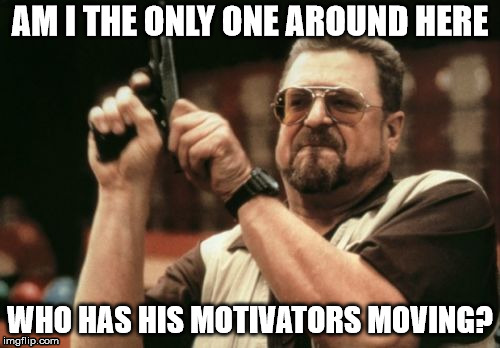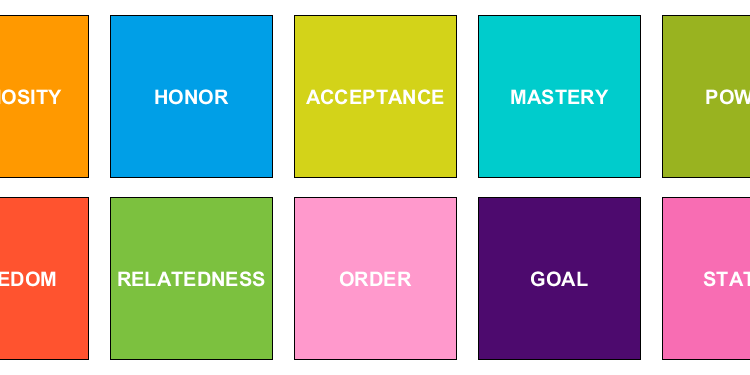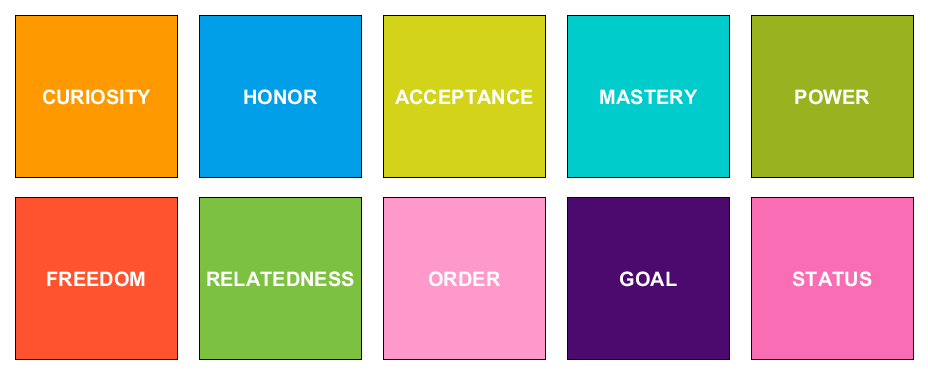An interesting technique from the Management 3.0 book “Managing for happiness” is the moving motivators exercise.
Table of Contents
What are the benefits of this exercise?
- It raises self-awareness about what motivates you, say what makes you get up in the morning.
- You can figure out what is important to your colleagues and support them in those areas.
- When you see the high priority motivators going down, you can think about countermeasures.
Motivators
Jurgen Appelo compiled motivational factors from different sources like Steven Reiss’ 16 basic desires, Ryan and Deci’s self determination theory and last but not least Daniel Pink’s Drive!

He came up with the following list of 10 motivators which can be best memorized with the mnemonic “CHAMPFROGS”:
- Curiosity
- Honor
- Acceptance
- Mastery
- Power
- Freedom
- Relatedness
- Order
- Goal
- Status
The game

The game consists of two phases
1. Prioritizing the motivators for your personal situation and
2. Moving the motivators according to a given context / situation
1. Prioritize
I’ve ordered every motivational factor after my preferences from left to right. Left: very important. Right: not so, but still important
When you arrange the cards you have 10! = 3628800 possible layouts, so it’s highly unlikely that you lay out the same sequence after a couple of days.
It’s more important to get the tendency right.
2. Move the Motivators
When the motivators are laid out, you mark the zero line.

Now think about a situation in your life e.g. the transition from your last job to your current job. Which influence did this transition have regarding your motivators?

In my example I used the transition from my job as a guitar teacher to my job at e.solutions GmbH.
Almost every motivator went up. Let’s look at the top five
Curiosity: I could encounter new things every day, whereas being a teacher mostly meant reproducing the same things over and over again.
Relatedness: I had cool new colleagues instead of being a one man show only meeting customers.
Freedom: Increased a bit. While being able to choose some clients and select material for a lesson, most of the time as a teacher I would stick to plan. Now I had the chance to establish testing processes for a brand new project.
Mastery: Went down a bit, because there was so much new stuff to learn at first.
Acceptance: Went up. There was a need for software test and I could establish a good connection to software developers who started to appreciate my contribution to the project.
The bottom line: I made the right decision at that time!
Some ideas and guidelines
When playing this game or “conducting this experiment” there are some things you can keep in mind:
- There is no right or wrong in the sequence!
- If you are the manager, start the game by laying out your motivators
- Leave out cards which you don’t understand or don’t fully grasp
When you can play it
I tried it a couple of times in different scenarios:
- 1on1s / feedback
- job interviews
- personal retrospectives
Further Readings and Resources
Books
Management 3.0: Leading Agile Developers, Developing Agile Leaders
Managing for Happiness: Games, Tools, and Practices to Motivate Any Team
How to Change the World: Change Management 3.0








